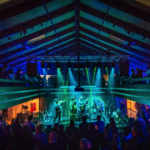Did you know that 44% of downhill skiers are women
11% of downhill skiers are children ages 7-11
40% of downhill skiers are ages 25-44
Fitness Benefits and/or Muscles Used
Downhill skiing is an excellent form of aerobic exercise, enabling skiers to raise and maintain their heart rates for at least 15 minutes.
Skiing is also an anaerobic exercise that increases strength and the ability to sustain short bursts of exertion. Skiing bumps and short-radius turns all rely on power and stamina.
Skiing is based on coordination, balance and flexibility that allow for a more dynamic range of motion and an ultimately better technique.
Downhill skiing works the leg muscles, especially hamstrings and quadriceps.
Abdominal muscles are used to control body posture during each run, strengthening them.
The triceps are used for accurate and strong poling maneuvers, conditioning these muscles.
Calories Burned
| Activity |
Adults* |
Children** |
|
Calories burned/hr |
Weight |
Calories burned/hr |
Weight |
Skiing downhill,
light effort |
295 calories/hr |
130 lbs |
151 calories/hr |
70 lbs |
|
352 calories/hr |
155 lbs |
189 calories/hr |
90 lbs |
|
431 calories/hr |
190 lbs |
236 calories/hr |
110 lbs |
Skiing downhill,
moderate effort |
354 calories/hr |
130 lbs |
181 calories/hr |
70 lbs |
|
422 calories/hr |
155 lbs |
226 calories/hr |
90 lbs |
|
518 calories/hr |
190 lbs |
283 calories/hr |
110 lbs |
Skiing downhill,
vigorous effort |
472 calories/hr |
130 lbs |
242 calories/hr |
70 lbs |
|
563 calories/hr |
155 lbs |
302 calories/hr |
90 lbs |
|
690 calories/hr |
190 lbs |
377 calories/hr |
110 lbs |
*www.nutristrategy.com **calculations are estimates based on consultation with American College of Sports Medicine
Even More Good News
Alpine skiing originated from specific inventions and techniques developed in Norway’s Telemark County during the last half of the 1800s.
In the 1960s and early 1970s, beginners started on long, stiff skis. Today, first-timers have a much easier time because of the advancements in equipment and teaching techniques. Shorter, shaped skies have shortened the learning curve for first-timers.
Most resorts throughout the United States have developed Learn To Ski Packages that include a lift ticket, equipment rental and instruction, providing a less intimidating environment to learn.
Many ski resorts are catering to young families by offering daycare and special programs that teach young children to ski and improve their skills. Other resorts organize adventure weekends that encourage children to participate in winter sport.
Source:
National Sporting Goods Association 2004 Sports Participation Study






